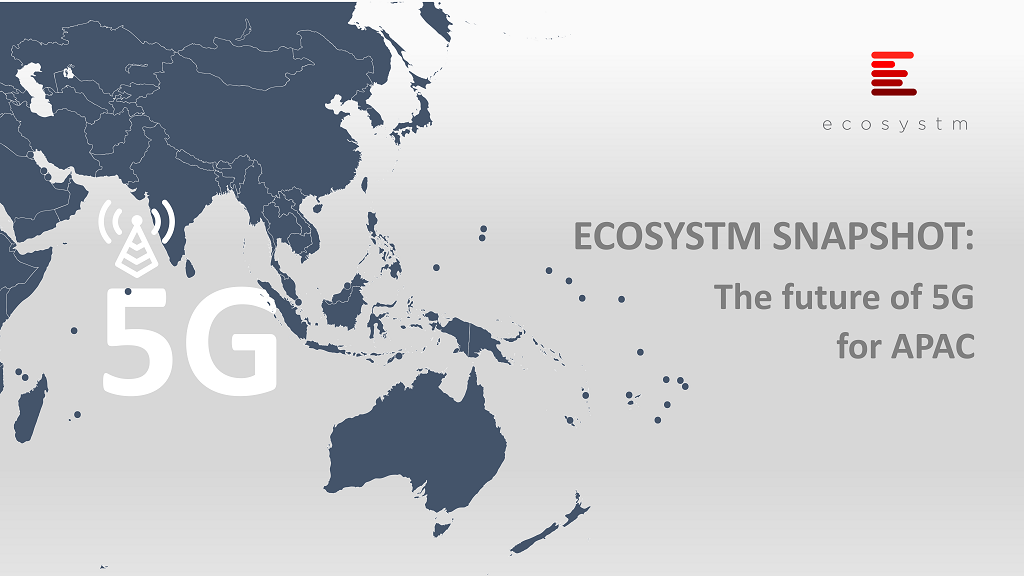
Roll Out of 5G will Contribute $900 Bn to APAC Economy over the next 15 years
According to a forecast by the GSMA Foundation, 5G will contribute almost $900 billion to APAC’s economy over the next 15 years. APAC’s edition of the GSMA’s Mobile Economy series published at MWC19 Shanghai revealed that Asia’s mobile operators will invest $370 billion – two-thirds of their overall investment in new networks – in building new 5G networks between 2018 and 2025. The report forecasts that the number of subscribers is expected to increase to 3.1 billion by 2025 with the main contributions coming from India, China, Pakistan, Indonesia, Bangladesh, and the Philippines.
The Roadmap for 5G
Every major Asia Pacific country has announced its intent or made the commitment to roll out 5G. The upside for an Asia Pacific digital economy is huge which will be driven by massive amounts of cross-cloud, inter-cloud, and smart infrastructure giving rise to the need for high-density connectivity between businesses and consumers.
“Take a step back and look at the key attributes of 5G – speed, latency, and density. Now take a step forward and look at global urban development. The explosion of bigger and more modern cities makes the telecom infrastructure a scaling issue for which 5G will be the right technology,” says Ecosystm Executive Analyst, Vernon Turner.
Working closely with the mobile operators pioneering 5G, governments are also engaging in the preparation and roll out of 5G Networks. Recently, the Singapore government announced to set aside SG$40 million to build up a 5G ecosystem. To promote digital transformation and economic growth, IMDA and the National Research Foundation (NRF) has allocated this funding for innovation, trials, R&D and enterprise use-cases in the 5G technology.
Similarly, the Vietnamese government awarded its first 5G trial licence to its largest telecommunications company, Viettel, to uplift the economy. Thailand is also seeking to deploy 5G and aims to start commercial 5G service next year.
“By 2022, 5G will be ‘the rising tide that lifts all boats’, making the Asia-Pacific region the biggest network offering network services that could give it an economic advantage,” says Turner. “But before that, some challenges for 5G belongs to regulatory approvals and the cost to build the next generation wireless network. For example, 5G networks operate on ‘millimetre waves’, a high radio frequency able to transmit large amounts of data but only over a short distance. To overcome this issue, governments have to approve large numbers of 5G small cells for operators to deploy.”
Is this an opportunity to skip out 4G altogether and leapfrog to 5G?
“The challenge for operators is to find workloads and applications that need 5G and at a price point that customers will pay. In my everyday travels, I have been underwhelmed by the number of customers ready to take advantage of 5G. Existing networks have the speed and capacity to run much of their businesses. I can see a scenario whereby operators will be forced to roll up 3G and LTE network functionality into 5G networks without being able to raise prices – despite being able to offer more benefits” says Turner.
How will 5G impact industries?
The future of interconnected ecosystems runs through IoT. The data that IoT sensors will create will be more valuable the faster it is analysed to produce business outcomes. Turner commented “Innovation accelerators such as VR (Virtual Reality) and AR (Augmented Reality) will generate new services for both consumers and industrial uses cases. The potential for asset management and services is ripe for disruption as 5G will bring more valuable information to workers through more efficient platforms. The knowledge-based worker and the future of work is here.”
Ultimately, APAC has the same possibilities and challenges as the rest of the world. Overall, the involvement of telecom companies, government organisations, infrastructure upgrades and the adoption of devices by consumers can affect the development and only after that can 5G become a reality.






